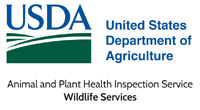U.S. Department of Agriculture: Animal and Plant Health Inspection Service
Document Type
Article
Date of this Version
2019
Citation
Root, J.J. 2019. What are the transmission mechanisms of influenza A viruses in wild mammals? The Journal of Infectious Diseases, jiz033. doi: 10.1093/infdis/jiz033
Abstract
Some influenza A viruses (IAVs) represent serious potential threats to public and agricultural health, with 3 notable examples from the past decade. During 2009, a novel H1N1 IAV (A[H1N1]pdm09), which was first detected in the United States, spread rapidly throughout many regions of the world. In the United States alone, the Centers for Disease Control and Prevention estimated that >60 million human cases were associated with this emergent and pandemic virus. During 2013, a novel H7N9 avian-origin IAV (Asian lineage avian influenza A[H7N9] virus) was first detected in China. This virus not only cost the poultry industry more than $1 billion through culling and market closures, it also proved to be detrimental to public health, as this virus is readily transmitted to humans and can cause moderate-to-high rates of mortality. More recently, a highly pathogenic clade 2.3.4.4 avian IAV was first detected in North America during 2014. Ultimately, the introduction of this virus (and subsequent reassortant viruses) elicited the most expensive highly pathogenic IAV outbreak in US history, with total losses estimated to be billions of dollars. These 3 examples exemplify the enormous burdens that some IAVs can place on public and agricultural health systems and suggest that a diversity of studies need to be conducted to address the complex epidemiology of these virushost systems.
Included in
Natural Resources and Conservation Commons, Natural Resources Management and Policy Commons, Other Environmental Sciences Commons, Other Veterinary Medicine Commons, Population Biology Commons, Terrestrial and Aquatic Ecology Commons, Veterinary Infectious Diseases Commons, Veterinary Microbiology and Immunobiology Commons, Veterinary Preventive Medicine, Epidemiology, and Public Health Commons, Zoology Commons


Comments
U.S. government work